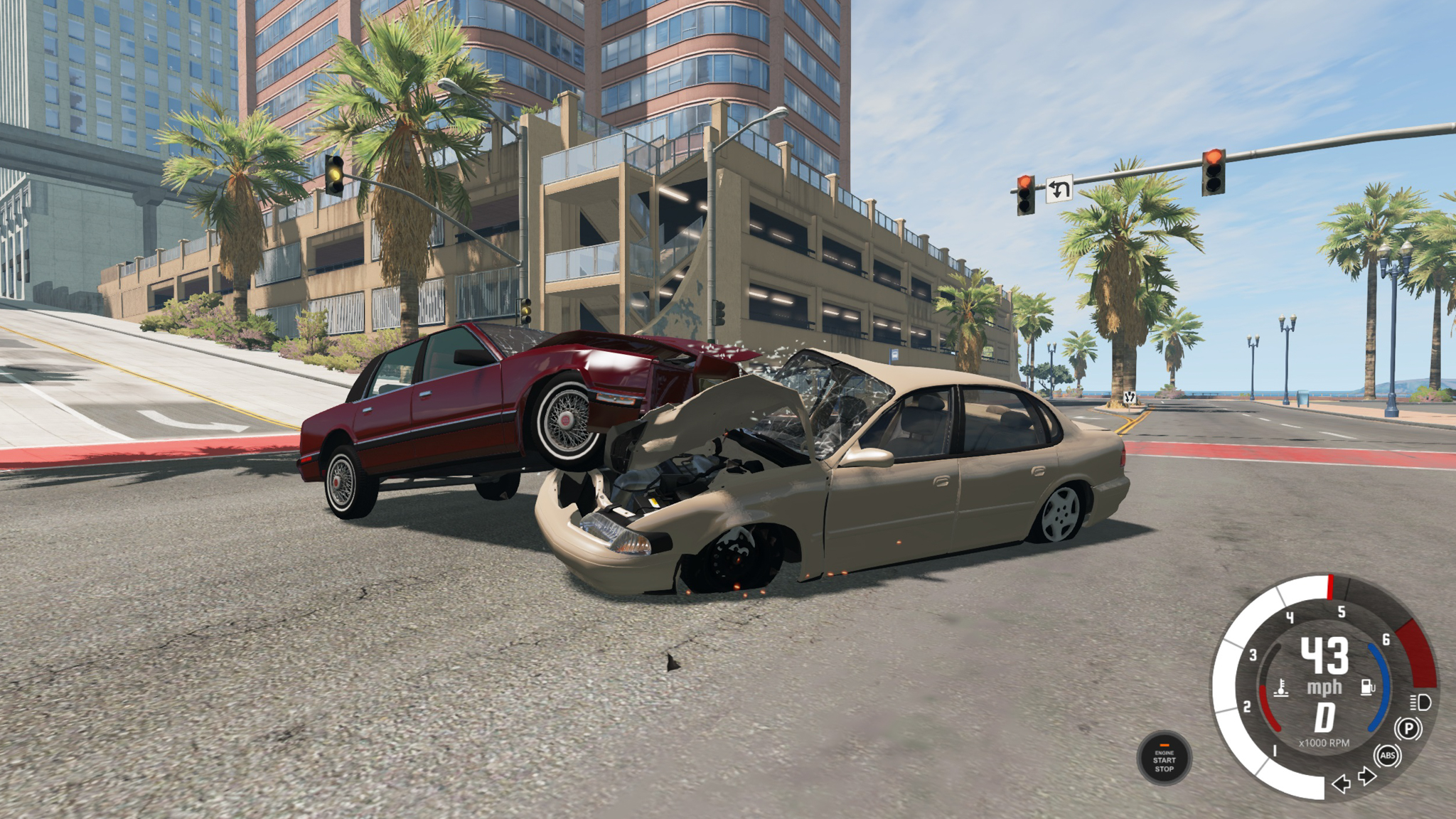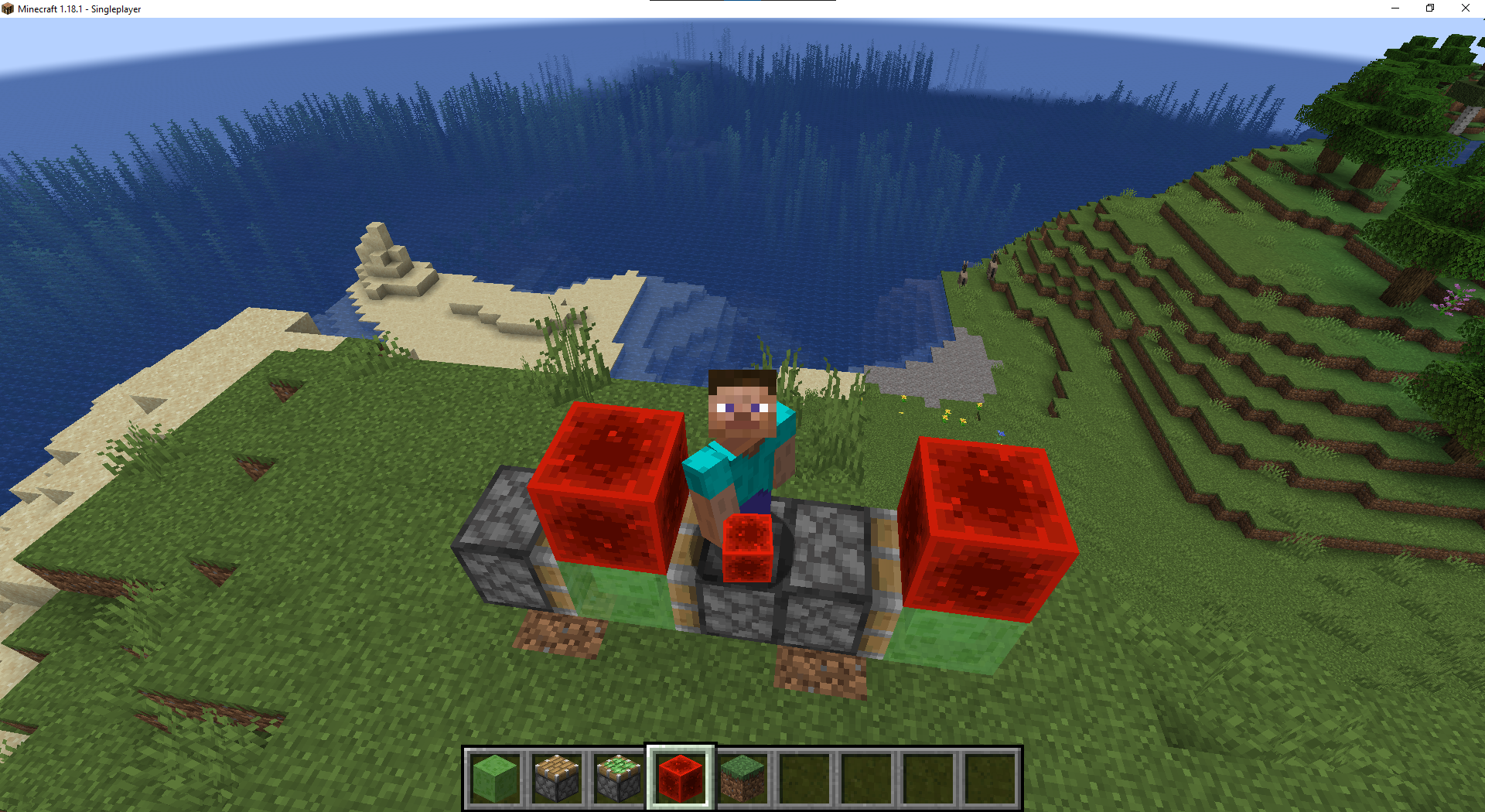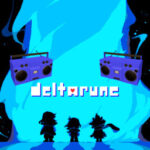Popular Now
BeamNG.drive is more than just a sandbox racing game—it’s a technical marvel built on one of the most sophisticated soft-body physics engines ever used in gaming. While many players may enjoy casual driving or reckless stunt work, the true depth of BeamNG lies in its intricate, highly detailed vehicle damage simulation. This article will explore, in depth, the specific topic of realistic crash physics and damage modeling in BeamNG.drive. We'll look at how the system works, how it evolves with different scenarios, and why it sets a new benchmark in simulation realism. Whether you're a crash test enthusiast, mod developer, or aspiring automotive engineer, BeamNG’s crash physics offer both brutal satisfaction and educational insight.
Understanding the Soft-Body Physics Engine
BeamNG’s foundation rests on a real-time soft-body physics engine that models every vehicle as a series of interconnected nodes and beams.
-
Node-Beam Structure:
-
Vehicles aren’t rigid objects. Instead, they consist of hundreds of individual points (nodes) connected by beams that act like springs.
-
This structure allows deformation to happen in a dynamic, procedural way, meaning no two crashes ever look exactly the same.
-
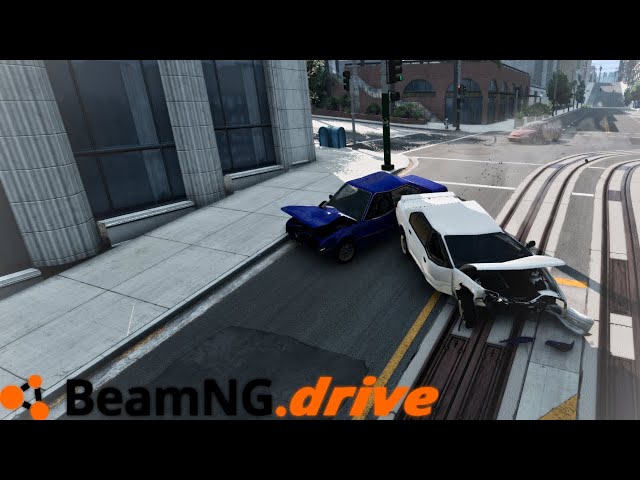
-
Real-Time Reaction:
-
When a car impacts a wall, the force travels through the beams, transferring pressure to adjacent nodes, causing bends, folds, or complete collapses depending on impact speed and angle.
-
BeamNG doesn’t rely on pre-baked animations or simplistic collision boxes—it's all physics-driven, which sets it apart from other driving games.
Crash Types and Their Physics Responses
Different types of collisions yield radically different deformation results. The game accounts for this with granular detail.
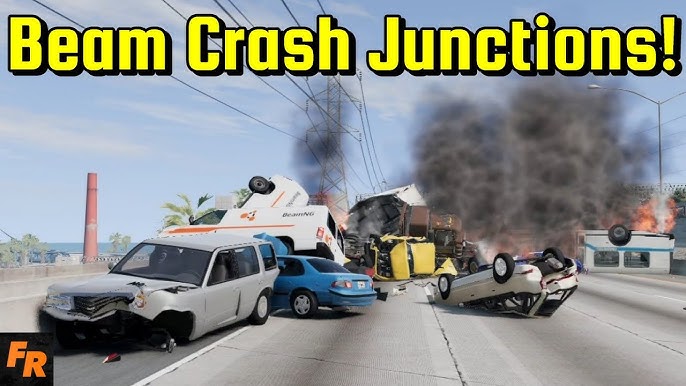
-
Frontal Collisions:
-
These demonstrate crumple zones effectively. The front end compresses while preserving the cabin in modern cars.
-
At higher speeds, even the firewall can collapse into the passenger space, mimicking real-world crash test scenarios.
-
-
Side Impacts:
-
Typically result in door intrusion, crushed pillars, and possible roof collapse.
-
The node-beam structure distorts laterally, often exposing the limits of vehicle rigidity.
-
-
Rear-End Collisions:
-
Often cause bumper deformation, trunk compression, and damage to suspension or fuel tank areas.
-
By analyzing different crash types, you can truly appreciate how meticulously BeamNG replicates real-world mechanics.
The Role of Material Types in Damage Simulation
Materials in BeamNG are more than just textures—they possess unique properties that influence the way they break, bend, or resist force.
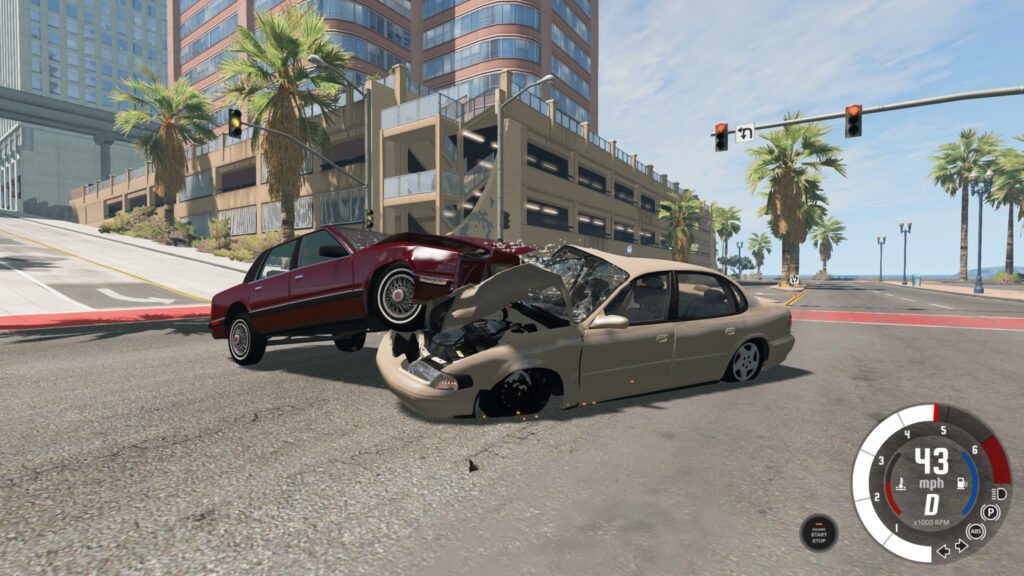
-
Key Material Types:
-
Steel: Most common in frames, bends under force but absorbs energy well.
-
Aluminum: Used in lighter vehicles, deforms easily but doesn’t spring back.
-
Glass: Shatters with realistic fracture patterns based on angle and speed.
-
Plastic: Found in bumpers or lights, fractures or detaches rather than bends.
-
-
Material Response:
-
A fiberglass hood will break away during high-speed crashes, while a steel frame may fold inward.
-
Glass reacts dynamically to the direction and severity of hits, resulting in spider-webbing or total shatter.
-
This layered realism ensures that every part of the car tells its own story during a crash.
Internal Damage and Functional Degradation
Crashing in BeamNG isn’t just visual—damage directly affects how your car functions.
-
Powertrain Impact:
-
Engine mounts can snap, transmissions can seize, or driveshafts can dislodge based on front-end or undercarriage impacts.
-
Severe damage may prevent the vehicle from moving entirely, while milder crashes might cause pulling or loss of traction.
-
-
Suspension and Steering:
-
Crumpled suspension arms cause wheels to bow inward or outward, altering steering responsiveness.
-
Steering racks can jam or become misaligned, causing erratic handling.
-
The realism extends far beyond aesthetics. The simulation truly captures how mechanical systems deteriorate under real conditions.
How Speed, Angle, and Mass Influence Damage
The way vehicles interact during collisions is influenced by physics fundamentals—speed, angle, and relative mass.
-
Speed Amplifies Force:
-
A 60mph crash will do exponentially more damage than a 30mph one due to kinetic energy (E=½mv²).
-
Crashes at highway speeds often lead to complete structural failure.
-
-
Angle Determines Spread:
-
A head-on crash distributes force evenly, while a glancing blow sends force sideways, creating shearing damage.
-
T-bones, rollovers, and sideswipes each engage different deformation patterns.
-
-
Mass Differential:
-
A large truck hitting a compact car causes the smaller vehicle to absorb most of the damage.
-
BeamNG simulates this imbalance to a highly accurate degree.
-
These physics principles aren’t just referenced—they’re fully integrated and visibly manifest in gameplay.
Using Scenarios and Mods for Realistic Crash Testing
BeamNG’s flexibility allows players to simulate real-world crash tests or fictional crash challenges.
-
Pre-built Scenarios:
-
Official crash test scenes feature wall barriers, rollover ramps, and sudden stops.
-
They’re great for beginners learning how various impacts affect vehicle behavior.
-
-
Modding for Realism:
-
Community mods add crash test dummies, realistic barriers, and even custom cars built to fail in specific ways.
-
Mods also provide real-world car replicas with authentic materials and structural integrity.
-
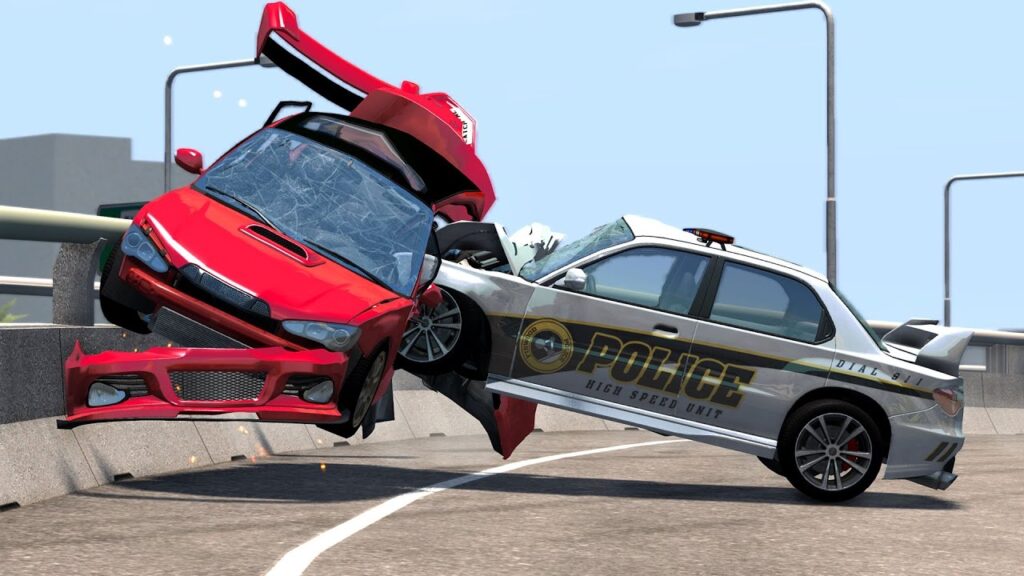
By customizing scenarios or building your own, you can explore crash mechanics from every angle.
Damage Visualization and Analysis Tools
Understanding the aftermath of a crash requires more than the naked eye. BeamNG offers several in-game tools to analyze impact.
-
Replay and Free Camera:
-
You can pause the moment of impact, rotate around it, and zoom in to see frame-level detail.
-
Slow-motion allows you to observe how each beam bends in real time.
-
-
Damage Overlays:
-
Some mods or UI extensions provide overlays showing stress, deformation points, and structural failure lines.
-
These visuals are invaluable for anyone treating BeamNG as an educational tool.
-
You’re not just watching crashes—you’re studying them, frame by frame.
Real-Life Comparisons and Educational Use
BeamNG’s simulation quality has garnered attention from educators, engineers, and even vehicle safety analysts.
-
Crash Test Correlation:
-
Comparisons between BeamNG crash results and real-world NHTSA or IIHS crash test data reveal striking similarities.
-
The simulation closely mirrors the structural compromise patterns observed in real tests.
-
-
Training Applications:
-
Automotive design students use the platform to study deformation under various conditions.
-
Physics educators employ it to teach principles like energy transfer and material stress.
-
BeamNG has real-world utility beyond entertainment, giving it unique value in technical and academic fields.
Limitations and Realism Boundaries
While BeamNG is a powerful simulation, it's not without its constraints.
-
Performance Boundaries:
-
Extremely detailed vehicles and environments may cause frame drops on mid-tier PCs, affecting crash accuracy.
-
Simplifications are sometimes necessary for performance reasons, limiting small-scale interactions.
-
-
Simplified Subsystems:
-
Electrical systems, airbags, and fuel dynamics are not modeled with the same depth as structural physics.
-
Characters and biological effects (like G-forces on humans) are either simplified or absent.
-

Despite these limitations, the game remains the most advanced simulation of vehicle crash physics currently available to the public.
Future of Crash Simulation in BeamNG
The development roadmap for BeamNG includes even more advanced physics systems and realism features.
-
Upcoming Features:
-
Developers are working on improved soft-body aerodynamics, realistic debris modeling, and damage-based audio cues.
-
AI traffic crashes and multi-vehicle collisions are being optimized for more lifelike pile-ups.
-
-
VR and Educational Integration:
-
VR support promises deeper immersion in crash tests.
-
BeamNG’s simulation could eventually integrate with CAD software for real-time vehicle prototyping.
-
The game’s potential extends far beyond its current state, with promising horizons in both entertainment and science.
Conclusion
BeamNG.drive’s vehicle damage system is not just a cool feature—it’s a central pillar of the game’s identity. Through its soft-body physics engine, the game simulates real-world crash behavior with unmatched accuracy and detail. From understanding how material types behave under stress to analyzing the role of speed, mass, and angle in impact deformation, BeamNG delivers a crash simulation experience that is both educational and exhilarating. Whether you’re pushing a truck off a cliff, recreating a crash test scene, or exploring suspension collapse after a side impact, the realism is always there. The depth and granularity of this system make it a standout achievement in game physics—and a playground for engineers and enthusiasts alike.











